Exploring Stress Analysis Of Aircraft Components
In this blog, we will be exploring the stress analysis of aircraft components. We will go into how it is applied in different design phases and the methods used to conduct stress analysis. Continue reading for a complete overview.
Understanding Stress Analysis Of Aircraft Components
Engineers are no strangers to stress analysis. It is a crucial part of everything we manufacture or build – from cars to aircraft, and buildings to everyday household appliances. Before a component can be approved, stress analysis is conducted.
In engineering terms, ‘stress’ refers to a force of resistance applied by a body against deformation per unit area. As an equation, it reads as σ = F/A. σ stands for stress, F is the internal resisting force, and A is the cross-sectional area.
Stress analysis tests the strength and durability of a material when it is subjected to stress, which can occur due to environmental factors, mechanical wear, damage, or during repeated use. Component failure may occur as a rupture, deformation, cracking, wear, or fatigue failure.
It can also be used to identify different forces acting on components that may not have been an initial concern. Locating these stress points allows engineers to make suitable adjustments to either the model or component materials.
You can read more on What Do Aerospace Stress Engineers Do? here.
Types Of Stress In Aircraft Components
Tensile Stress- Wings, Fuselage
- Occurs when forces act to stretch a component.
- Measured in units of force per area e.g. Pascals
Compressive Stress– Landing Gear, Engine Mounts
- Occurs when forces work by compressing or shortening an object.
- Measured in units of force per area e.g. Pascals
Shear Stress– Rivets, Bolts, Wing Spars
- Causes layers of materials to slide past one another by applying forces parallel to the surface of an object
Thermal Stress– Engine Components, Composite Materials
- Induced by extreme temperature changes causing materials to expand, contract, or melt
Why Is Stress Analysis Necessary For Aircraft Safety?
For aircraft components, stress analysis is vital. Component or aircraft failure doesn’t just mean a waste of resources, money or time; it can be life-threatening. Therefore, it is essential for aerospace engineers to not only conduct stress analysis but also innovate new approaches to ensure aircraft safety.
Stress analysis of aircraft components prevents mechanical failures and adds value to mechanical design. By conducting stress analysis on aircraft components, it guarantees the quality and durability of that part. The result is a better overall product with stress-withstanding capabilities.
Clients nowadays are more conscious of being economically sustainable. One way they achieve this is by investing in designs with prolonged lifespans. Stress analysis enhances a client’s confidence and trust, as well as assuring that an aircraft is built to last.
To be legal and safe for flight, aircraft must have an annual inspection every 12 calendar months. If the aircraft is used commercially, i.e. passenger jets or for hire, it must also have an annual or 100-hour inspection.
Stress Analysis In Design Phases
When conducting stress analysis, the approach may differ depending on the function and maturity of the phase; conceptual design, preliminary design, detailed design, or the verification process. If unfamiliar, you can read our overview of the aircraft design process here.
Stress Analysis In Conceptual & Preliminary Design
In the conceptual and preliminary design phases, load paths and safety factors are considered, so engineers can then evaluate the feasibility and adequacy of the load paths and the scale of major structural elements. In these earlier stages, most of the optimisation and trade studies will take place.
Stress Analysis In Detailed Design
The bulk of stress analysis activities take place in the detailed design phase. Sizing and checking on aircraft components are carried out in detail and the design is finalised.
Stress Analysis In The Verification Process
To pass verification processes and prove airworthiness, stress analysis is used to certify the aircraft can withstand forces to the minimum standard, ensuring it will not succumb to structural damage or detrimental yielding.
Exploring Stress Analysis Of Aircraft Components: Methods
Finite Element Modelling (FEM)– A computational analysis method that breaks down a complex structure into smaller, more manageable elements, so that engineers can pinpoint stress, strain and displacement.
Beam Theory– Measured in mathematical equations to analyse bending stress of components, such as a wing spar, under various loading conditions.
Strength Of Materials– Provides an understanding of how materials perform and act under different stresses. You can read our blog on How Airframe Material Strength Analysis Ensures Safety here.
Computational Fluid Dynamics (CFD)– Can be used along with FEA to understand the aerodynamic stress on aircraft components during different flight manoeuvres.
Fatigue Testing– A simulation of repeated loading cycles aircraft will experience during its lifespan, demonstrating how it will operate under long-term stress.
Strain Gauge Testing– Measures the strain on aircraft components during a flight test.
Airframe Designs Analysis Capabilities
When it comes to exploring stress analysis of aircraft components, Airframe Designs has plenty of experience.
Our team of specialists conduct various types of stress analysis, including FEM, fatigue testing, material strength analysis and more. We are happy to help no matter what stage you are in, be that the conceptual design or final design calculations. Find out more about our analysis capabilities here.
To see our work in action, you can look at our case studies for analysis projects here. Should you be interested to know more or like to work with Airframe Designs, then please contact us.



